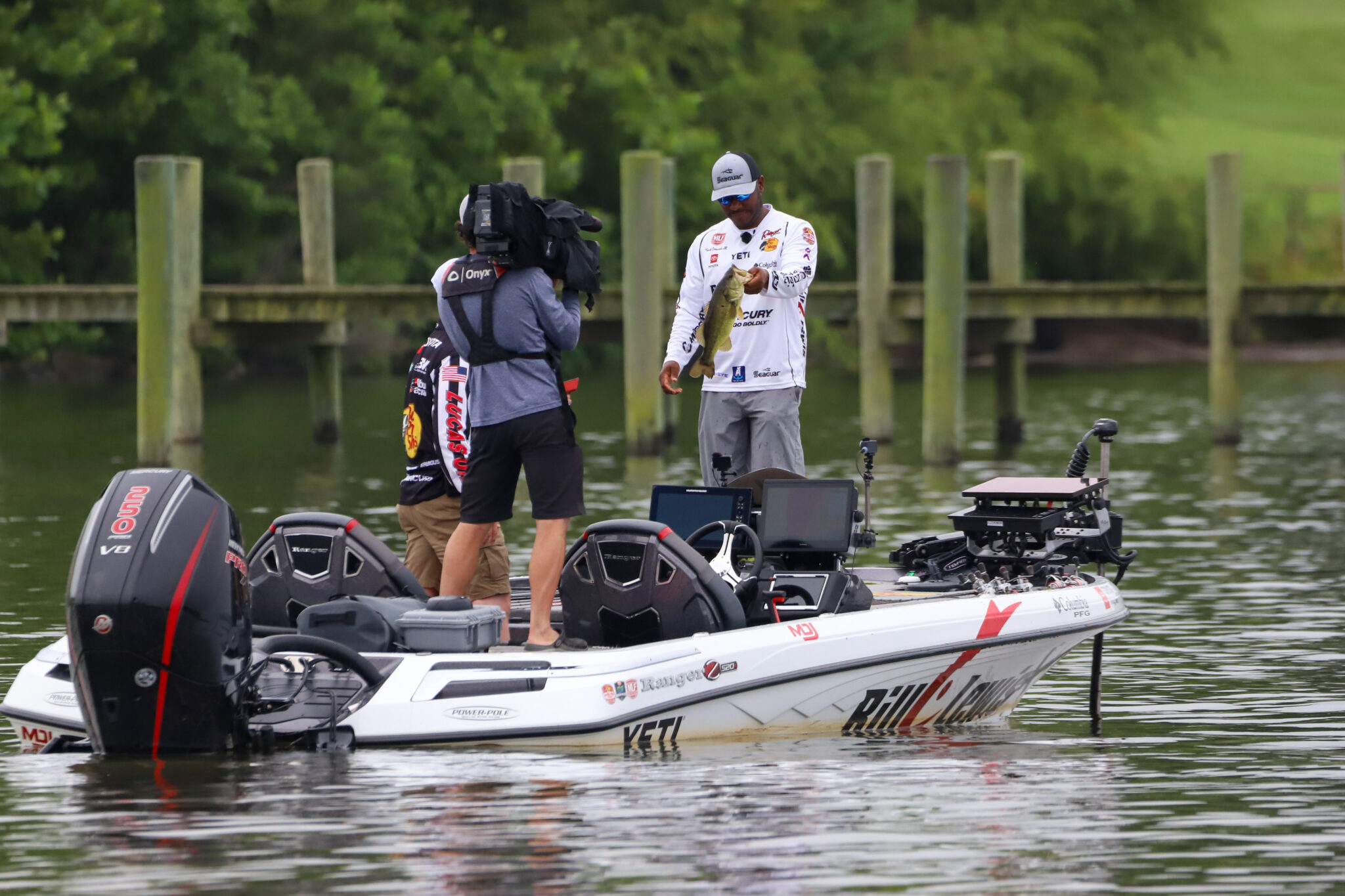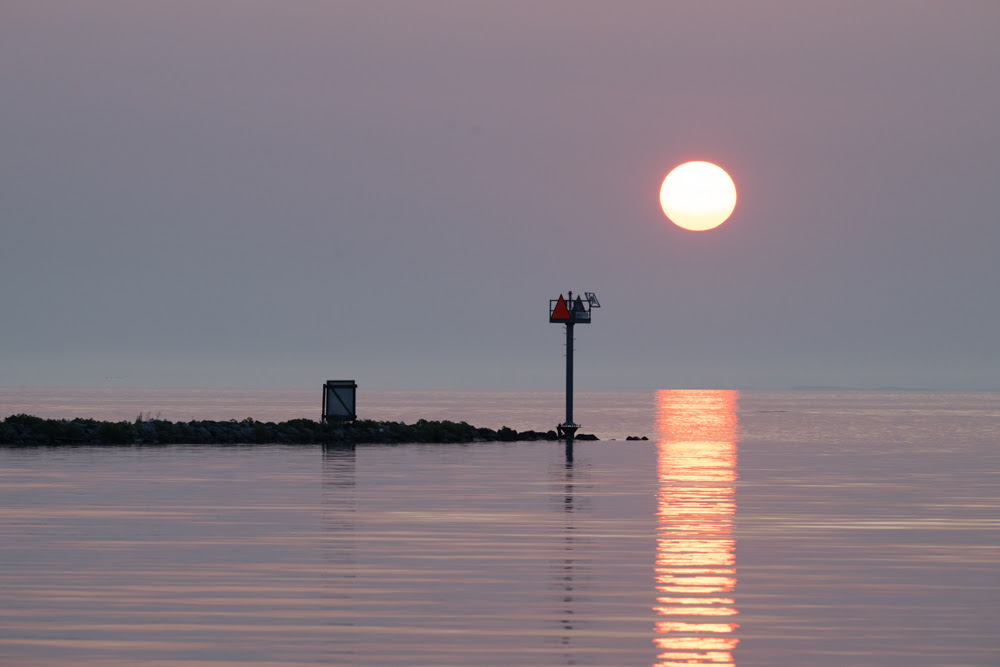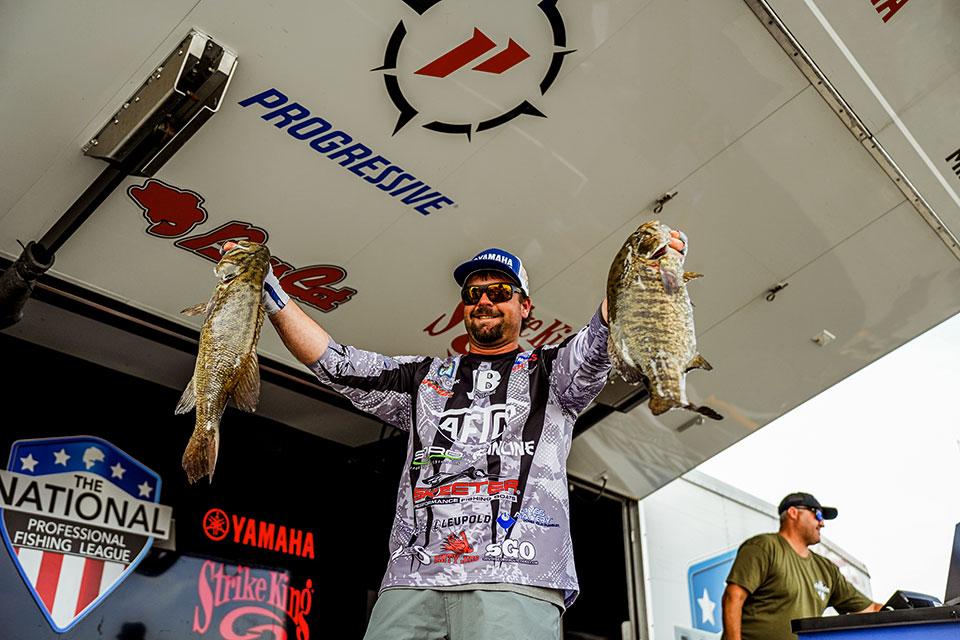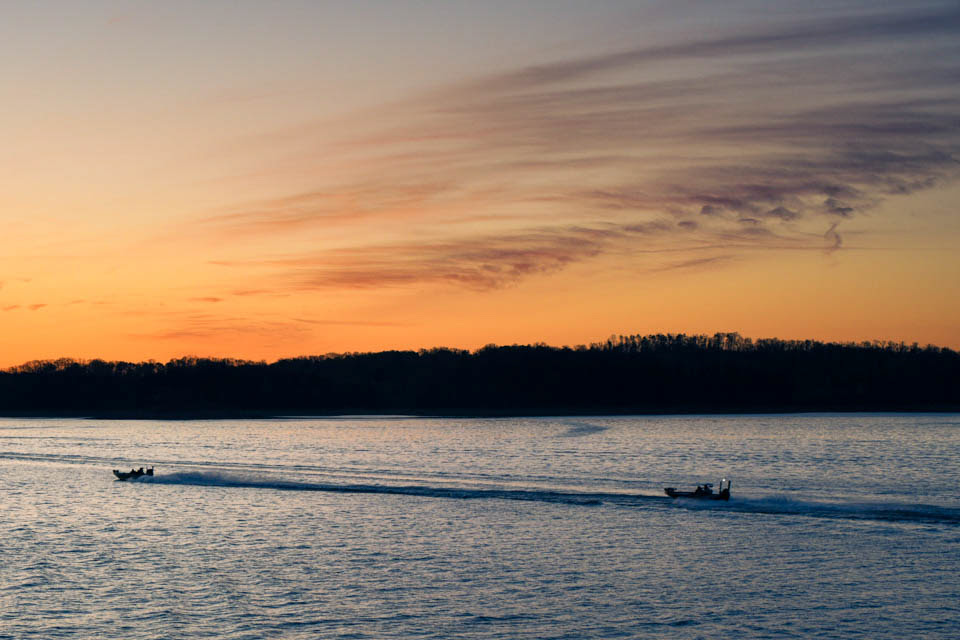Taking the Bass by Storm
Vance McCullough
Every cloud has its silver lining. Especially those clouds associated with low pressure systems.
The mother of all lows, the hurricane, and her relatives, the tropical storm and even a strong tropical wave can bring mixed blessings to anglers.
Hurricanes cause anxiety among millions of people for days on end as they slowly churn over warm ocean waters, their cones of uncertainty ever shifting.
But tropical cyclones also induce light air and high times for fisherfolk far from their zone of maximum winds and damage.
A dropping barometer corelates with a spike in fish activity. Even across the Great Plains and into the upper Midwest where a hurricane is as seldom seen as plate of shrimp and grits, the first snowstorm of the year usually rides on the counterclockwise winds of a massive low. And smart anglers break out their buzzbaits.
From coastal Texas around the horn of Florida and up the Eastern Seaboard strong storms in late summer and fall cast a shadow of doubt and fear but they bring angling opportunities for anybody fishing within the storm’s radius of rotation.
As Dorian’s eye passed just offshore a couple of weeks ago, I fished the wind-streaked waters of a lake well inland and watched a bass attack a magnolia leaf floating in the shallows. Topwater time.
Safety is always a concern on the water. It moves to top of mind when fishing in extreme weather. Make a plan that will enable your safe return even in the event of mechanical failure on your boat. This means you should play the wind, venturing into it upon launching and riding it back to safety at the end of the trip.
To complicate matters, winds will shift as a system passes so plan accordingly. If the eye is to your east, expect winds to come first from the east, then the north and then weaken as they come from the west indicating the passage of the storm.
If the eye passes to your west, you’re likely on the Gulf Coast and can expect a strong southerly blow before the west winds kick in and the system moves on.
While this knowledge is helpful to power boaters, it is critical to those in paddle craft such as kayaks. I’ve fished through more than a couple hurricanes and tropical storms in a kayak, always launching into the wind and carefully watching its changing direction so I don’t miss my ride home. During Hurricane Matthew, I just fished from a dock until the winds made it hard to stand, let alone cast. Fish bit well up to that point.
Just because Dorothy and Toto are getting blown somewhere over the rainbow, there’s no guarantee the fish will bite or that you will be on them when they do, though the odds do lean more heavily in your favor. I recall a couple of hurricane days when I worked hard for a single fish.
Last year my son, Hunter and I fished the Kayak Bass Fishing Trail tourney on Fellsmere Reservoir and Stick Marsh in South Florida. Practice went great. We smashed ‘em.
Tropical Storm Alberto made landfall as we launched on game day. There was speculation the event would be cancelled. It wasn’t. We dug and fought through crashing waves and howling winds to make a speed drift on the broad, flat Fellsmere Lake, each of us catching one fish before conditions deteriorated. That was enough to place us in the top half of the field. Not nearly enough to cash a check.
We relaunched on the famous Stick Marsh, just over the berm, to finish our day among towering palm trees and head-high cane that offered a slight buffer from the blow. We watched a competitor pedal his Hobie to a nearly stationary position, facing piling waves as they came through a break in the wall of palms. He steadily caught 4-pounders on a trap. The Mirage Drive pedal propulsion system would have been worthless in the topped out hydrilla on Fellsmere but over the clean bottom on the north end of the Marsh, it was the best hands-free way to position a kayak and make repeated casts to a funnel that was loaded with hungry fish.
That guy didn’t win.
This was the day Brandon Haney set a new single day record for a KBF Trail event with 114.5 inches on his best 5 bass.
Three anglers photographed and released a 5-fish limit in excess of 100 inches.
Meanwhile, Hunter and I looked for a cut that didn’t have a boat in it. I reached for my tackle bag and didn’t feel it. I looked back saw it floating like baby Moses in his basket some 70 yards away. Wind and water had washed it from its spot behind my seat. Hunter had already lost a rod and reel that morning and had no idea where it happened. He got to one of his first spots after paddling through high waves and the thing just wasn’t with him anymore.
It was windy that day.
Some guys found fish. Others got worn out trying and ate a sandwich, watching from shore with windburned faces and wet butts. Most gathered for the postgame meetup. Bass tournaments are the best laboratories we have for understanding fish behavior. Winner Haney said, “I was doing a lot of flipping where there’s a lot of hydrilla and you can’t really use your Mirage Drive, so I was paddling around a little bit, trying to get up into the weeds. But the main thing I was catching them on was the Chatterbait, drifting around and throwing it where I thought they would be. It worked really well today.”
Shallow grass is often trashed under such conditions and bass set up just outside of it, often in the subsurface wind tunnel where the water hits land and turns back toward the lake. This is a great place to parallel the bank with an Alabama Rig or spinnerbait.
Then again, if you can find a protected cove, the flipping bite can be strong so long as the cover isn’t trashed by previous commotion – remember those shifting winds we talked about earlier, they have to figure into your ever-changing game plan. If punching mats, expect a high mat bite, just up under the surface of the slop. Don’t simply snatch your lure off the bottom if you don’t get bit on the way down. Fish feel the lightened barometric pressure even under the mats and a little agitation across the surface will shake tiny crawfish and grass shrimp loose so the bass may well be feeding up, even under the canopy. They will almost certainly gravitate to the outer edge of the mats unless weather gets downright nasty.
Tropical weather comes in bands. White caps give way to gentle rolls and even eerie calm at times. Topwater lures are great as long as fish can see them. When winds pick up, throw a bigger, noisier bait – I’m looking you, Strike King Mega Dawg. Big walking plugs strike a nice balance for those who don’t want to change lures every 10 minutes or carry a bunch of rods.
Lightning kills the fun. Not only for anglers, but for fish as well. Even during a normal afternoon thunder shower, fishing will be outstanding as winds pick up and the air gets light and cool, even while rain is falling, but as soon as thunder starts booming and lightning starts flashing, fish seek shelter. So should we.
And of course, you’re wearing your PFD right? Rain gear is optional during late summer storms that bring cool breezes and chilly rain. Life vests are not. Even in a big boat, if winds make it hard to stand on the deck, imagine trying to swim. There are plenty of comfortable options that allow anglers to cast and retrieve all day without the bulk and excessive heat of traditional life vests. Mustang Survival makes inflatable vests that won’t slow you down when the bite is fast and furious.
Please note also – while land-locked lakes can be fun to fish during strange weather, tidal waters are a no go. When effects of a storm are coupled with an outgoing tide during the time of year when our tides are the strongest anyway, you can be washed out to sea or overcome by unusually strong currents miles inshore. Backcountry islands that would have offered rest may themselves be drowned in a flood surge of several feet. Be smart. Those fish aren’t going anywhere. You’ll get ‘em next time, as long as there is a next time.


















